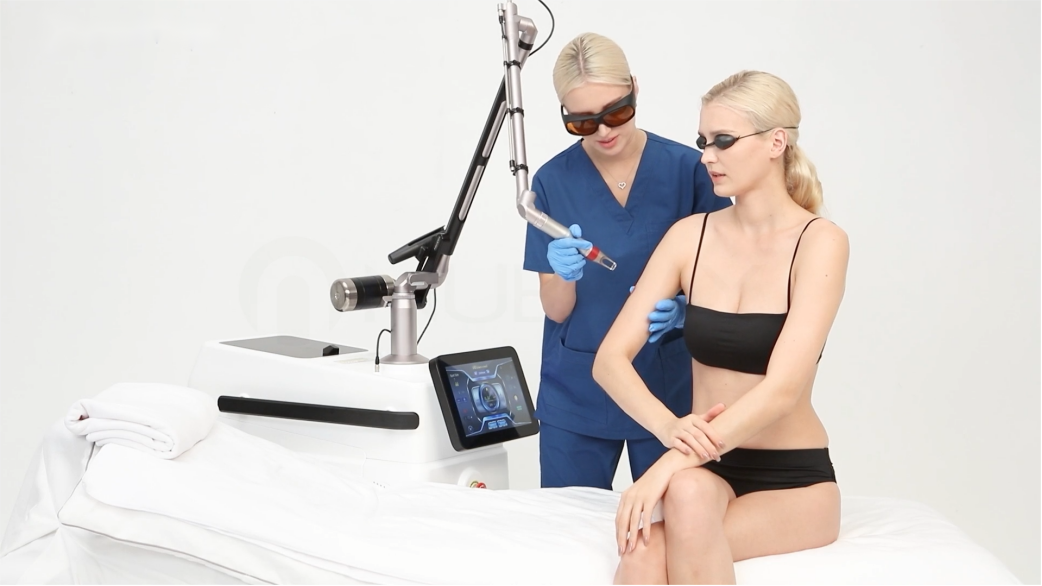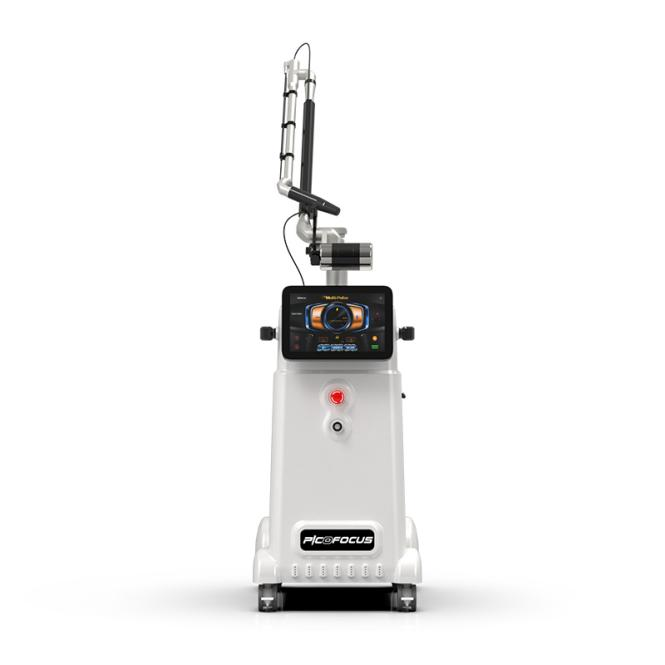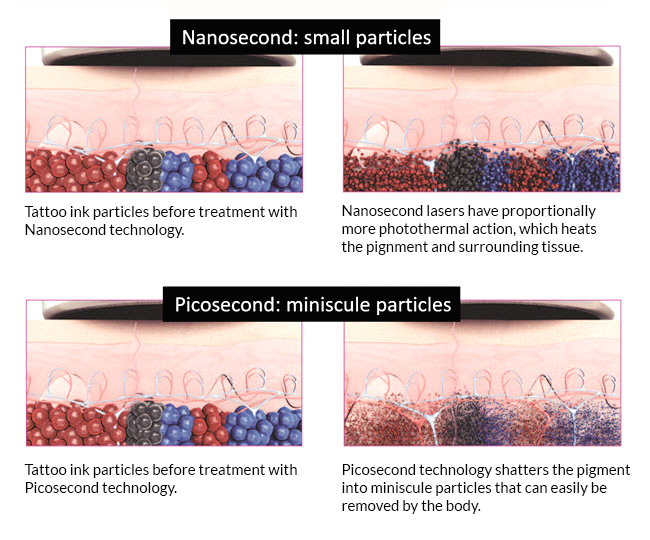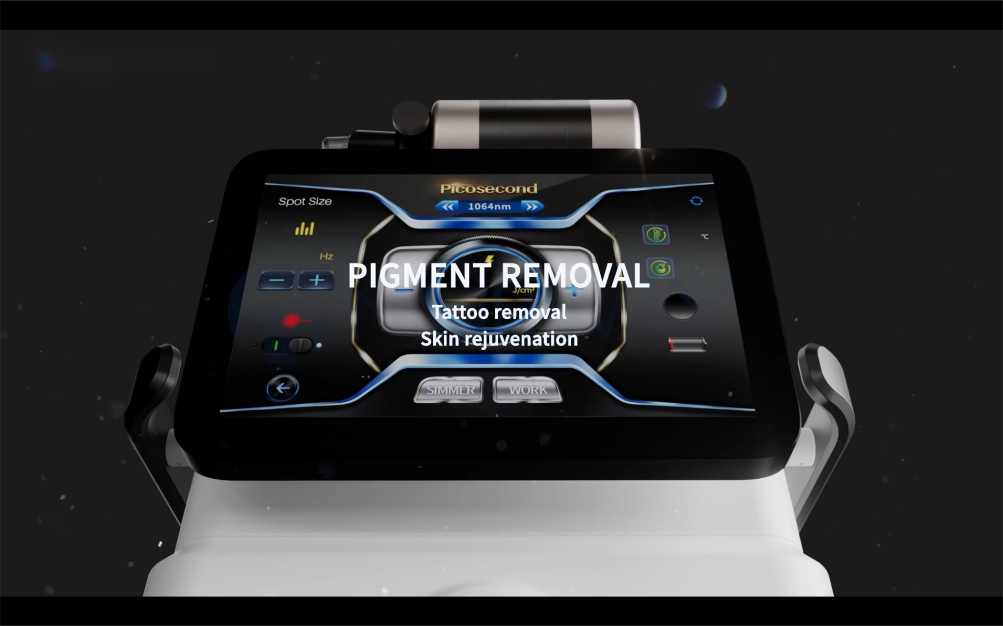In this era of pursuing perfection, pigmentation seems to have become a “little monster” in the hearts of many people, occasionally appearing to cause trouble. So, the laser beauty device became the “lightsaber” in the hands of modern people, vowing to compete with these uninvited pigments. But there are so many laser instruments on the market, which one is the true “pigment killer”? Today, let’s uncover this mystery and see which laser performs the most outstandingly on the battlefield of pigment removal. From Q-switched laser to picosecond laser, each technology claims to be a “pigment terminator”, but who can stand out in actual combat? Let’s step into this “light and color” competition together and see how technology can safeguard beauty!
What symptoms will pigmentation lead to?
Freckles
Freckles are a very common autosomal dominant hereditary punctate hyperpigmentation disease, mostly in females. Commonly found on the nose and cheeks of the face, with light brown to dark brown dot like spots ranging from needle to grain size. Sun exposure can worsen this disease, but it is slightly reduced in winter.
Melasma
Melasma is a pigmentation disease that occurs on the face. It appears as light yellow-brown, dark brown or dark coffee-colored spots with varying depths and shapes. The rash often occurs on the protruding part of the cheekbones and forehead, and can also affect the brow arch, eye area, nose dorsum, nose wings, upper lip, chin and other parts. The incidence rate in middle-aged Asian women can be as high as 30%.
Coffee-fronted spots
Coffee-fronted spots, also known as milk coffee spots, are a common skin lesion. Coffee-fronted spots are light brown or coffee-colored patches of varying shapes and sizes, with a smooth surface and uniform color. The incidence of coffee-fronted spots is 10-20%. Some coffee-fronted spots have regular shapes with smooth edges, while others have irregular shapes with map-like edges.
Brown-blue nevus on the zygomatic region
The brown-blue nevus on the zygomatic region is also known as acquired bilateral nevus of Ota-like spots. It is a special type of pigmented lesion that is mostly acquired and occurs mostly in young Asian women. Usually, the clinical symptoms of patients are mainly manifested in the bilateral zygomatic regions, generally presenting as brown oval spots, or polygonal spots, and patients usually do not feel particularly obvious.
Post inflammatory pigmentation
Post inflammatory pigmentation is an acquired symptom caused by various etiologies, including acute or chronic inflammation of the skin, allergic reactions, mechanical damage, drug reactions, and treatment measures, leading to an increase in pigmentation.
How does laser works on pigmentation?
By utilizing the explosive effect and selective absorption principle of laser, high-energy laser pulses are applied to pigment tissues (melanin, tattoo pigments, permanent tattoo agents, dust particles) and absorbed by them. The pigment tissues are rapidly expanded after laser shock and heating. Due to the laser pulse being much lower than the thermal relaxation time of melanin structure and tattoos in the body, the pigment tissues absorb laser energy and generate mechanical oscillation waves to crush them. The ruptured pigment particles are then engulfed by the body’s metabolism and macrophages, and eliminated from the body, ultimately removing the pigment. At the same time, the laser beam can effectively penetrate the dermis layer, promote tissue activity, accelerate collagen cell regeneration, thereby achieving wrinkle removal, whitening, skin rejuvenation, and improving skin quality. Due to the principle of selective thermal absorption of lasers, the optimal absorption wavelengths for various pigments are different. However, the absorption of 1064nm and 532nm lasers output by other lasers in the human body is extremely small. Therefore, this device can effectively remove diseased pigments and vascular tissues without damaging surrounding tissues.
Picosecond laser: A powerful fighter for pigmentation removal
Picosecond laser refers to a treatment method that gathers energy and uses the output of extremely short unit pulse duration to break up melanin. You can imagine how fast the speed of picosecond laser is.For laser treatment, the faster the speed, the higher the accuracy and the less damage to the skin. Therefore, picosecond laser is very suitable for pigmentaion removal and whitening. Compared with traditional laser beauty methods, picosecond is much better at removing melanin. It is no exaggeration to say that picosecond is the nemesis of melanin. In addition, the energy carried by picosecond laser can directly reach the deep layer of the skin, accelerate the metabolism of the skin, and has the ability to stimulate collagen regeneration.
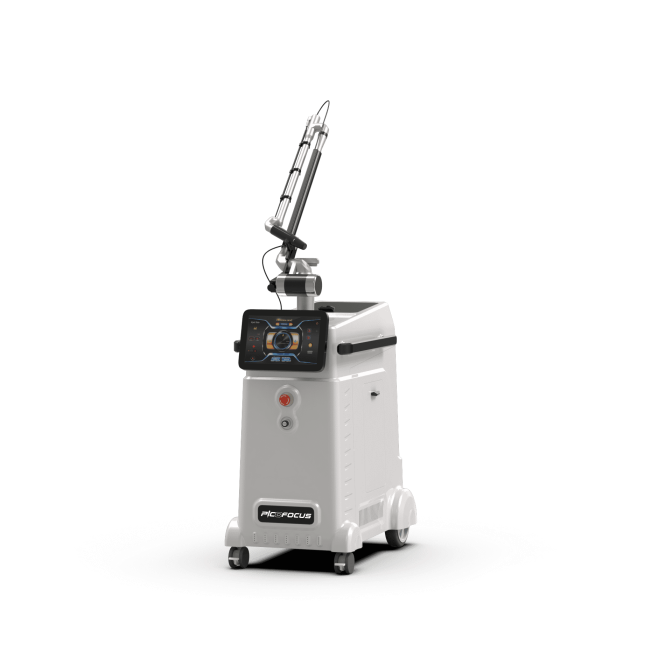
Picosecond Laser vs Q-switched Laser
Mechanism
Picosecond laser: directly shatters pigment particles through optomechanical effects, causing less damage to surrounding tissues and faster recovery.
Q-switched Laser: By utilizing photothermal effect, pigment particles undergo thermal expansion and rupture, which may cause certain thermal damage to surrounding tissues.
Treatment effect
Picosecond laser: It has better effects on small pigment particles, such as stubborn pigmentation and tattoos, and has fewer side effects.
Q-switched laser: Suitable for general color spots and shallow tattoos, but not as effective as picosecond laser for small pigments.
Number of treatments
Picosecond laser: usually requires fewer iterations to achieve the desired effect.
Q-switched laser: may require more treatments.
Pain sensation and recovery period
Picosecond laser: Mild pain and shorter recovery period.
Q-switched laser: Strong pain sensation and relatively long recovery period.
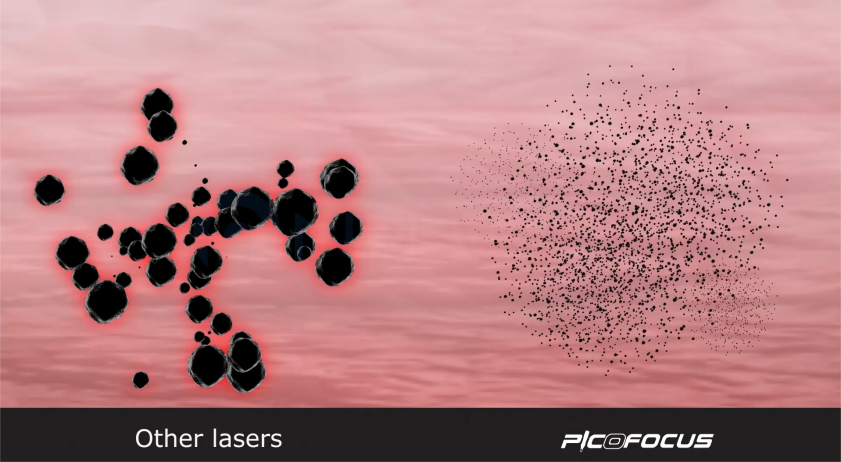
The treatment process of picosecond laser
Before treatment, the doctor will perform a skin test on the patient to determine the treatment plan.
During the treatment, the patient may feel a slight stinging sensation, but it is usually tolerable.
After the treatment, the skin may be temporarily red and swollen, but these symptoms will disappear quickly.
Precautions after picosecond treatment
1.Cold compress
After picosecond treatment, there will be a slight burning sensation, skin redness and swelling at the treatment site. Local cold compress for 15-30 minutes can help reduce inflammation and postoperative swelling and promote early recovery, but be careful to avoid frostbite when applying cold compress.
2.Keep skin dry
During the recovery period, keep the local skin dry and clean. Avoid strenuous exercise or sweating within 3 days after surgery, and avoid contact with water within 5-7 days. Within one week after surgery, you can use a medical moisturizing and repairing mask containing collagen, hyaluronic acid and other ingredients 1-2 times a day.
3.Avoid irritation
During the recovery period, avoid adverse factors that irritate the skin, such as rubbing the face vigorously. Strengthen the cleanliness of the local skin, and do not use irritating skin care products, especially avoid using some oily cosmetics. Use antibiotic ointment 1-2 times/day to repair the wound and prevent infection. You can wash your face normally after the scab forms. Wait for the scab to fall off naturally, and do not do it yourself.
4.Diet adjustment
Eat a light diet within one week after treatment, avoid spicy and photosensitive foods, and avoid drinking alcohol. Eat more foods rich in vitamins, such as fresh fruits and vegetables. These foods contain more vitamins, which can improve skin resistance and accelerate skin recovery.
5.Strict sun protection
Pay special attention to sun protection within 3-6 months after the ultra-picosecond treatment, because the skin is more sensitive after the treatment and is easily damaged by ultraviolet rays, resulting in local skin melanin deposition. It is recommended to avoid outdoor activities as much as possible after the treatment to reduce ultraviolet radiation, especially in the first month. Wear a mask, sun hat, sun umbrella, etc. when going out. Or apply SPF>30, PA+++ sunscreen 15 minutes before going out.
Q&A
Q: Does “Picosecond” really hurt?
A: Most people can accept the pain of picosecond laser freckle removal, which generally does not require anesthesia and is similar in severity to a rubber band bouncing onto the skin.
Q: How long is the recovery period? How many times do I need to do it?
A: The skin needs a recovery period after the operation, and the effect can be seen at least 7-14 days. The number of treatments varies according to the type of pigmentation, generally 2-5 times, with an interval of 1-2 months.
Q: Will the skin become darker after the “picosecond” surgery?
A: The phenomenon of darker skin after laser freckle removal is not a sign of failure, but a self-repair of the skin. After a period of time, the skin will metabolize these pigments and return to normal skin color.
Q: Who is not suitable for “Picosecond”?
A: People with scars, vitiligo, allergies, photosensitivity, recent oral collagen, recent history of sun exposure, skin inflammation, pregnancy, etc.

